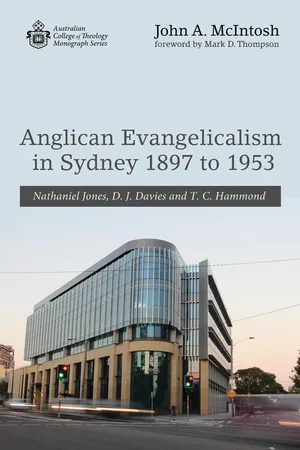![]()
1
Challenges Intellectual and Ecclesiastical
Introduction
By the mid-nineteenth century Evangelicals and others faced growing “rationalistic infidelity” in society and ritualistic innovation in the Church of England. They set up Wycliffe Hall (1879) in Oxford and Ridley Hall (1881) in Cambridge to resist both challenges.
By the turn of the century there was still appreciable Christian religious life, even revival. But more and more, people had taken on the idea of human autonomy in the pursuit of truth: that the human mind could establish and understand truly scientific and historical fact as well as moral and religious truth independently of commitment to revealed, Christian ultimate beliefs and moral values. Many of the more educated people in society were explicit agnostics, some even atheists. The response of some theologians was to adapt to this by adjusting aspects or even the whole of their faith to a non-Christian view of reality.
Two Liberal Evangelical historians, both contemporary with our three Moore principals, recorded their view of the era. Vernon Storr (1869–1940) described English theological developments to 1860 in some depth. Another, L. E. Elliott-Binns (1885–1963), an Emmanuel College student when Davies was teaching there, continued the story to 1900. He noted that by the end of the century the church’s “point of view could no longer be taken for granted,” at least for intellectuals.
On the other hand, at least one highly educated unbeliever, the English philosopher and statesman, A. J. Balfour (1848–1930), became an active defender of orthodox Christian thought; the eighth edition of his Foundations of Belief appeared in 1901. There were also some from among the able self-educated promoters of anti-Christian secularism among the working classes who returned to active Christian faith. Indeed, for the many more-than-nominal believers, the Christian message was still very much alive, if not always well. Movements promoted by Evangelicals, especially the Church Missionary Society, even expanded after 1860. In England, there were also great and successful evangelistic campaigns which benefited the church at home and abroad. Movements for the promotion of the personal Christian life such as Keswick flourished and spread to Australia.
The Challenges
In the late-nineteenth and early-twentieth centuries five main challenges demanded a response, within Anglicanism, especially from the Evangelicals. First and most basic was the rise of a new, liberal concept of God and, related to that, of his revelation. The second was the question, therefore, of the nature and authority of the Bible and how it should be understood in the light of historical criticism and the natural sciences. A third challenge was posed by the rejection of the doctrine of the atonement. These first three were probably what Evangelicals meant by the term “rationalist infidelity.” The Darwinian explanation for the origins of the human species posed a fourth challenge. A fifth was peculiar to the Church of England and the Church of Ireland (independent after 1869), namely the Tractarian or Anglo-Catholic movement (also known as the Oxford Movement) and its associated ritualism.
The first four developments affected all the churches in England, Scotland, and Ireland, as well as elsewhere in the English-speaking world (including Australia) and beyond. The Anglo-Catholic movement became pervasive within the Church of England at home and abroad, though much less so in Ireland. Moore College principal T. C. Hammond was a son of the Church of Ireland.
Challenge 1: The Concept of God and Revelation—Philosophy and Doctrine
The most basic challenge to Evangelicals was to the concept of God as the self-existent and distinct creator of the universe, and, with that, Holy Scripture as his special revelation. The Evangelicals held a wholly orthodox doctrine of God the Holy Trinity. Perhaps most of them were “moderate” Calvinists like J. C. Ryle, E. A. Litton, and Handley C. G. Moule. But, like others, they had to rely for the defense of Christian theism on the classic works of non-Evangelicals. Required reading at Cambridge and Oxford and Trinity College, Dublin in the nineteenth century and into the twentieth were the High Church Bishop Joseph Butler’s Analogy of Religion (1736) and William Paley’s Evidences of Christianity (1795), including his famous “watchmaker” argument for the existence of God. These works assumed an element of human autonomy with regard to knowledge of God. ...
